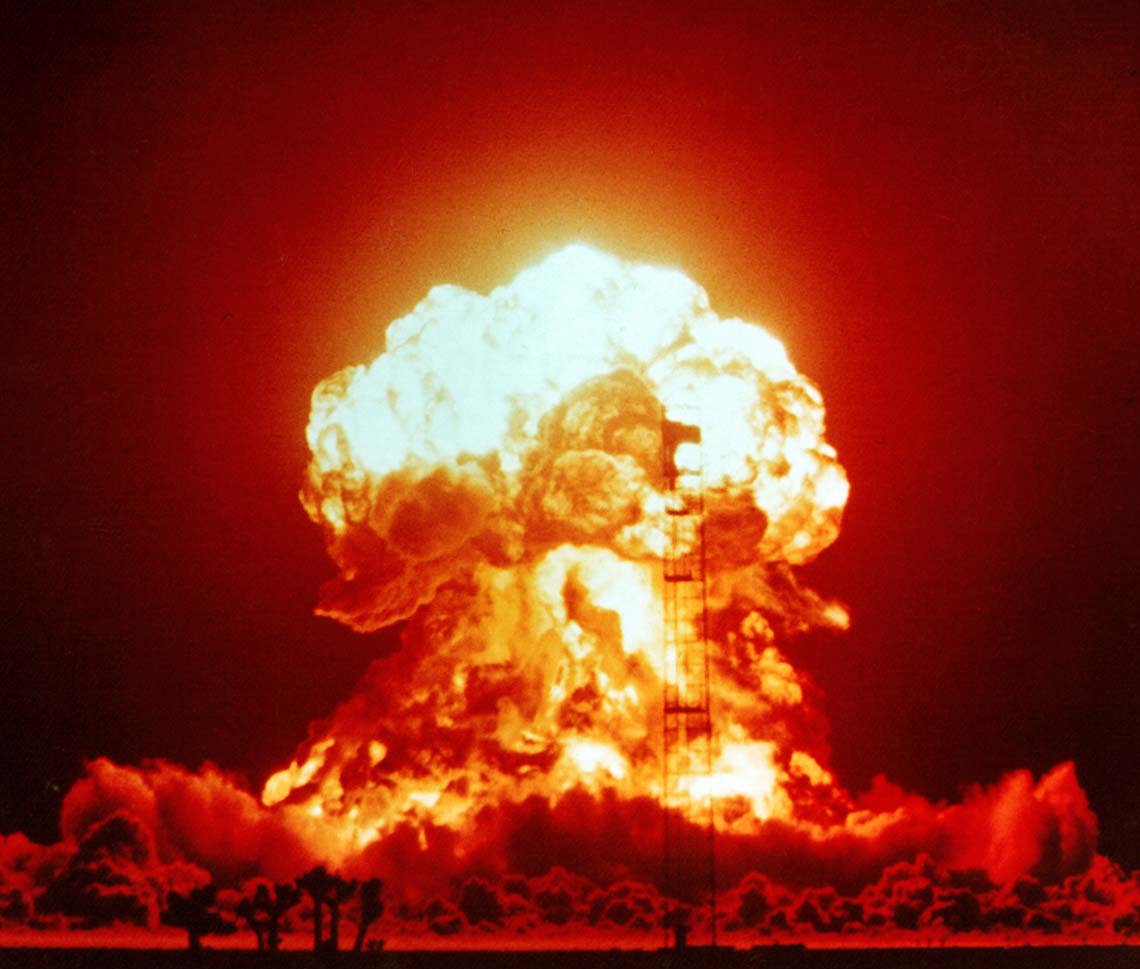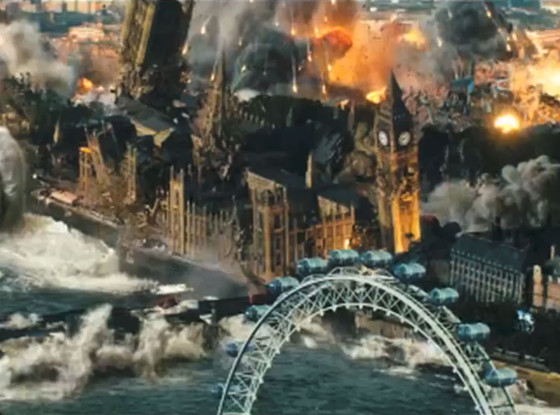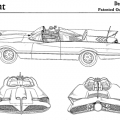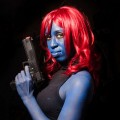As superhero fans, we have had a pretty good year for movies. Man of Steel, GI Joe: Retaliation, Pacific Rim, and others have all brought a lot of our classic superheroes to the screen and added a few new ones as well. All of these movies that I’ve mentioned have had big set-piece urban destruction scenes where the heroes and villains tear apart entire cities, causing the collapse of buildings in showers of metal, glass, and concrete.
And they all really miss the point.
They’re all fun movies. Man of Steel and GI Joe: Retaliation have come as close to what my mind’s eye says these movies should be. I haven’t seen Pacific Rim yet, so I’m going to withhold my judgment on that flick, but I expect that the urban destruction of massive mecha fighting Kaiju that we’ve seen in the trailers means that the guidance in this blog post applies equally to that film.
Even though these are all fun movies, the devastation of Smallville and Metropolis in Man of Steel, and the wipe out of London when Cobra Commander drops a “Rod from God” from orbit on that ancient city were moments when I actually started checking my watch to see how much longer the films had to run. And I’ve come to the conclusion that for me – and for many other superhero fans judging by the internet chatter – blowing up a city just isn’t enough anymore.
Superhero Writing: When Blowing up a City isn’t enough…
Back in the old days, superhero writers would have mad scientists coming up with doomsday weapons that would level cities and that would be enough to set our superheroes on twenty pages of fights, chases, and action as they fought to try to save the city and its people from destruction. But this storytelling technique was really overdone even back in the 1980s.
So, superhero writers decided to get a bit more sophisticated. They decided to let the villains win. Coast City and its 7 Million inhabitants were destroyed in the DC Universe, turning Hal Jordan into the villain Parallax in his grief. Gotham City was devastated by earthquake and turned into a “No Man’s Land,” and in 2006, the New Warriors were involved in an incident killing hundreds of people that ultimately gave rise to the Superhuman Registration Act and the Marvel Civil War.
Yeah, whatever.
The thing is, in the world of superheroes we’ve been blowing up cities for decades and we still haven’t managed to do it in a way that is able to keep the audience spellbound. We have seen the death and destruction caused in real life whether it was the fall of the Twin Towers on 9/11, or whether it was the damage caused by the floods in Alberta and Toronto just this past summer. The real world is able to show us devastation that hits our souls in ways that computer-generated shattering algorithms and fluid dynamics simulations never will.
Looking at it from another perspective, as moviegoers, we have seen planets blowing up, whether it was Alderaan in Star Wars or Krypton in Superman and Man of Steel. Roland Emmerich did the disaster epic 2012, building on his penchant for planetary destruction displayed in Independence Day. And we can go on from there.
The act of destruction isn’t meaningful to us as viewers. We may watch it to see the spectacle, but we separate ourselves from what we see in order to protect out psyche. As children, we haven’t developed that ability as yet, so that’s why parents don’t normally let kids watch scary movies. It keeps them from having nightmares, and allows the parents a full night’s sleep.
For the rest of us, we know the destruction of cities is all fake. The people within are fictional, nameless images on a screen. This problem has only become worse with the advances in computer graphics. In the race to build more and more realistic scenes of cinematic urban destruction, viewers treat each new spectacle as just another example of geeks playing at pushing pixels around on a screen. Considering that I’m a computer animator myself, I know just how much that can hurt those of us in the industry.
So, what do we do?
As creators, and as superhero writers, how do we keep the audience on the edge of their seats tense with excitement? How do we make the stories we tell exciting and leaving the audience wanting more?
Stealing ideas from Romance Authors for Superhero Writing
Romance is one of the more popular genres of fiction. It has a ravenous fan base that consumes massive word counts of stories all spinning romantic fantasies. Though some “serious writers” look down their noses at Romance as being derivative and formulaic, the fact is that Romance outsells every other genre out there. In fact, according to statistics, 1 out of every 6 books sold in 2012 were romance novels.
The genre publishers openly admit that there are formulas with plots that follow a very rigid structure that predict turning points to within 1 to 3 pages. Romance writers typically shorthand “HEA” for “Happily Ever After” as the necessary payoff for each and every book. Each set of characters in the romance sub-genres could be defined as stock characters: billionaire, rancher/cowboy, secret agent/cop, high-school sweetheart, sheik/prince/royal – and that’s just in the modern genres. Historical romance, from Regency to ancient has casts of characters from pirates to gladiators and all of them are instantly recognizable without varying too much from the template. I don’t think that too many Romance writers would be too offended if I said that Romance publishing puts the “mass-production” into “mass-market-fiction.”
So what are the Romance writers doing right that we Superhero fiction writers are doing wrong by blowing up cities? Why is it that as a genre they can move 16.7% of the book market and Superhero books languish in a publishing ghetto?
More to the point, what can we learn from them?
As readers, we like to become involved with the characters that make up our stories. We want to root for the heroes and what they stand for, and we also want our own version of HEA.
Our heroes have relationships – romantic and otherwise – and those relationships matter to us as readers. If we can get our audience to like our characters then by extension they will like the people our characters like and hate the people our characters hate. And, if you’ve done it right, then the audience will also root for those happy relationships to move towards HEA.
On the other hand, if you threaten those relationships as an author, then the audience’s tension level rises. If you credibly threaten the character then the audience is going to be on the edge of their seat.
Here’s an example: In Man of Steel, the highest point of tension in the movie was when General Zod appears with his Kryptonian guard at the Kent family farmstead and threatens to kill Martha Kent. The film had previously established that Martha and Jonathan Kent were loving parents who had raised Clark Kent to adulthood, and that Clark had a very strong familial relationship with his adoptive parents. So when Zod is threatening to kill Martha Kent – a character both the hero AND THE AUDIENCE LIKED – the only thoughts going through the audience’s head at that point in the film were whether Clark would get there in time, and, if he did, would his appearance be enough to stave off the attack by Zod and his guards. Any one of these guards would be more than a match for Clark. Zod more so. All of these bad guys together and at that point the audience cannot see any way that Martha Kent comes out of the encounter alive.
So, we wait on the edge of the seats as Clark rushes to the rescue, hoping that he’ll be in time but doubting that he could be.
I guarantee that no-one who had been watching the movie up to that point was checking their watch to see how much longer the film had to run. Compare that to how the audience felt when Metropolis was being destroyed.
What lessons for writing superhero stories can we take away from Romance writers and the Man of Steel movie?
- Give your hero the chance for a relationship the audience would like to see as a “happily ever after” type of relationship. This doesn’t have to be a romantic relationship – a relationship with a family member, colleague, police commissioner/detective, librarian – whatever. As long as this is a relationship the hero wants and would like to have continue.
- Threaten the relationship. Either the person in the relationship is threatened directly by the bad guys, or the person could be possible collateral damage when the bad guys threaten to blow up the city.
- The threat must be a result of the villain’s actions and not because of the target character’s incompetence. Jimmy Olsen, Superman’s Pal, was always getting into trouble because of his own foolishness and is pretty much a joke character nowadays who is saved from DC Comics polling their readership on whether he should live or die only by the fact that they haven’t gotten around to asking yet. Even Lois Lane in the 1950s-60s got threatened nearly every issue and it wasn’t until John Byrne took over Superman in the 1980s that she actually became a competent reporter. Compare that with the Rachel Dawes character from Batman: The Dark Knight. She becomes threatened by the Joker not because she is incompetent – far from it. She becomes threatened because the Joker is very good at what he does.
If you’re going to blow up a city, give the audience a reason to care about it by making it personal. Put a character the audience cares about in the path of destruction. They’ll thank you for it.







Interesting article! I wonder if the ratio of females to males that purchase books is relative to the ratio of romance book readers vs sci-fi/superhero readers. I believe that the reason romance books sell more is because there are simply more females who purchase books than males (4 to 1). Also, surprised that you didn’t reference Iron Man 3, Kick Ass 2, Wolverine, and the upcoming Thor as other superhero movies that released / being released in 2013.
Thanks for the comment Peter. I think that while the gender difference of the book-buying public can explain some of the market dominance of Romance books as regards other genres, I don’t think it explains everything. Fantasy novels and YA novels (think Harry Potter, Twilight, etc.) skew very heavily towards a female readership as well but the respective market shares are a fraction of the Romance market. The Romance publishers are very good at identifying what their audience wants and delivering it to them whereas the Action/SF/Superhero genre by and large focuses on the explosions and spectacle rather than encouraging the readers or viewers to emotionally invest in the story.
Don’t worry about the superhero movies I haven’t mentioned yet. I’ve got plans for them…